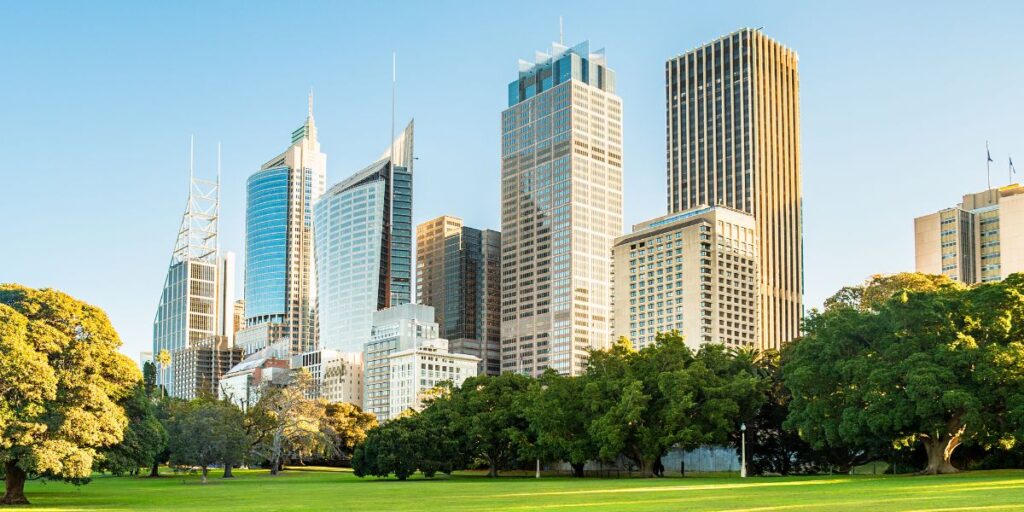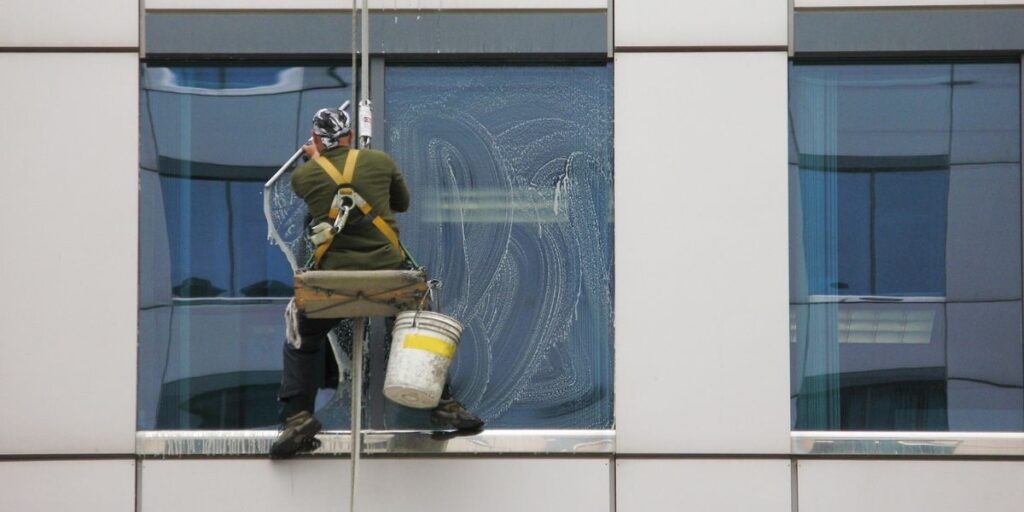Keeping high-rise buildings looking clean is a tough job. Dirty windows can make a building less appealing and even make people inside feel less happy and productive.
High-rise windows get dirty easily because of things like pollution and bad weather. This affects how the building looks and what people think of it.
Building owners and managers often wonder how often the windows should be cleaned to keep the building looking great.
It’s a real problem. If windows aren’t cleaned regularly, dirt builds up and becomes hard and expensive to remove.
Dirty windows also let in less natural light, which makes the inside of the building less nice for people. This can make people less happy and less healthy, as natural light helps people feel good and have more energy.
Take the Empire State Building in New York City as an example. The people in charge found that dirty windows not only made the building look bad but also made people working there less happy.
Because of the city’s pollution and bad weather, the dirt built up fast, so they had to change how often they cleaned the windows.
The random schedule they used before didn’t work well and led to more money being spent and more complaints from people in the building.
The solution is to make a plan for cleaning the windows regularly. This plan should be made just for the specific building and the area around it.
Here’s a detailed way to decide how often high-rise windows should be cleaned:
Understand the Environment

Different environments necessitate different cleaning frequencies. Urban areas with high pollution levels, such as those near busy roads or industrial areas, will require more frequent cleaning.
In contrast, buildings in rural areas may not need cleaning as often.
For instance, a study conducted on high-rise buildings in Los Angeles found that buildings in downtown areas needed window cleaning every three months due to high levels of vehicle emissions and construction dust.
In contrast, buildings located in suburban areas required cleaning only twice a year.
Also See: A Comprehensive Guide To High-Rise Windows Cleaning System
Consider the Building’s Use

The type of activities within the building can also influence how often windows should be cleaned. Office buildings, hotels, and residential buildings each have different requirements.
For example, hotels might require more frequent cleaning to maintain a high standard of appearance for guests, while office buildings might prioritize cleanliness for both aesthetic and health reasons.
In the case of the Empire State Building, the management team decided to increase the frequency of window cleaning to quarterly, which significantly improved tenant satisfaction and reduced long-term cleaning costs.
Assess Weather Conditions

Weather plays a significant role in window cleanliness. Areas with frequent rain, snow, or wind can cause windows to get dirty more quickly.
Relatable: Best Tips For High-Rise Windows Cleaning In Any Climate
Buildings in coastal areas may experience salt deposits, while those in industrial regions may deal with soot and other pollutants.
A study on the impact of weather on window cleanliness in Chicago showed that buildings exposed to frequent rainfall and wind required window cleaning every two months to maintain clarity and cleanliness.
This proactive approach helped in preventing permanent staining and buildup.
Monitor and Adapt

It’s crucial to regularly assess the condition of the windows and adapt the cleaning schedule as necessary.
Using professional window cleaning services that can provide expert evaluations can be beneficial.
They can identify specific issues such as mineral deposits, mould, or other contaminants that require specialised cleaning techniques.
Regular monitoring can also help in identifying any emerging problems early, such as damage to window seals or frames, which can be addressed promptly to avoid more significant issues down the line.
Case Study Insights
The Empire State Building’s revised cleaning schedule offers valuable insights. By increasing the frequency of window cleaning from biannually to quarterly, they achieved several positive outcomes:
- Enhanced Appearance: The building’s exterior remained consistently clean, enhancing its iconic status and appeal.
- Improved Tenant Satisfaction: Tenants reported higher satisfaction due to increased natural light and better views, contributing to a more pleasant work environment.
- Cost Efficiency: Although the cleaning frequency increased, the overall maintenance costs decreased due to the prevention of severe grime buildup, which is more expensive to clean.
Similarly, a high-rise office building in Tokyo adopted a monthly window cleaning schedule, primarily due to the city’s high pollution levels.
This regular maintenance ensured the building always looked its best, which was crucial for its reputation and the business operations within.
Conclusion
Determining the optimal window cleaning schedule for high-rise buildings is not a one-size-fits-all solution.
It requires a thorough understanding of the environment, building use, weather conditions, and regular monitoring.
Adopting a strategic approach, as demonstrated by the Empire State Building and other case studies, can lead to better building aesthetics, enhanced occupant satisfaction, and cost savings in the long run.
By considering these factors and tailoring a cleaning schedule to meet the specific needs of your high-rise building, you can ensure your windows remain clean and your building maintains its appeal and functionality.
Regular professional cleaning, adapted to the unique circumstances of your building, is the key to achieving these benefits. For comprehensive and expert high-rise window cleaning services, trust Rope Access Australia to keep your building looking its best year-round.




